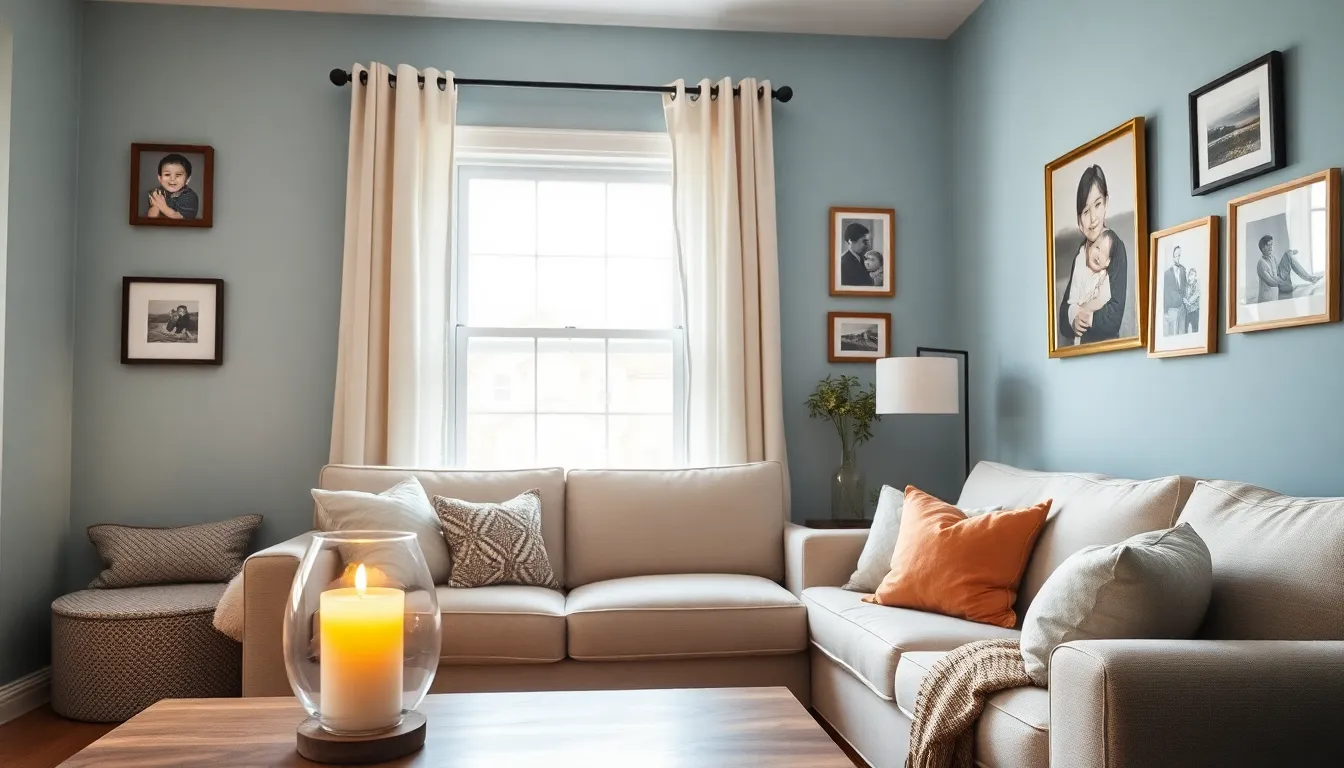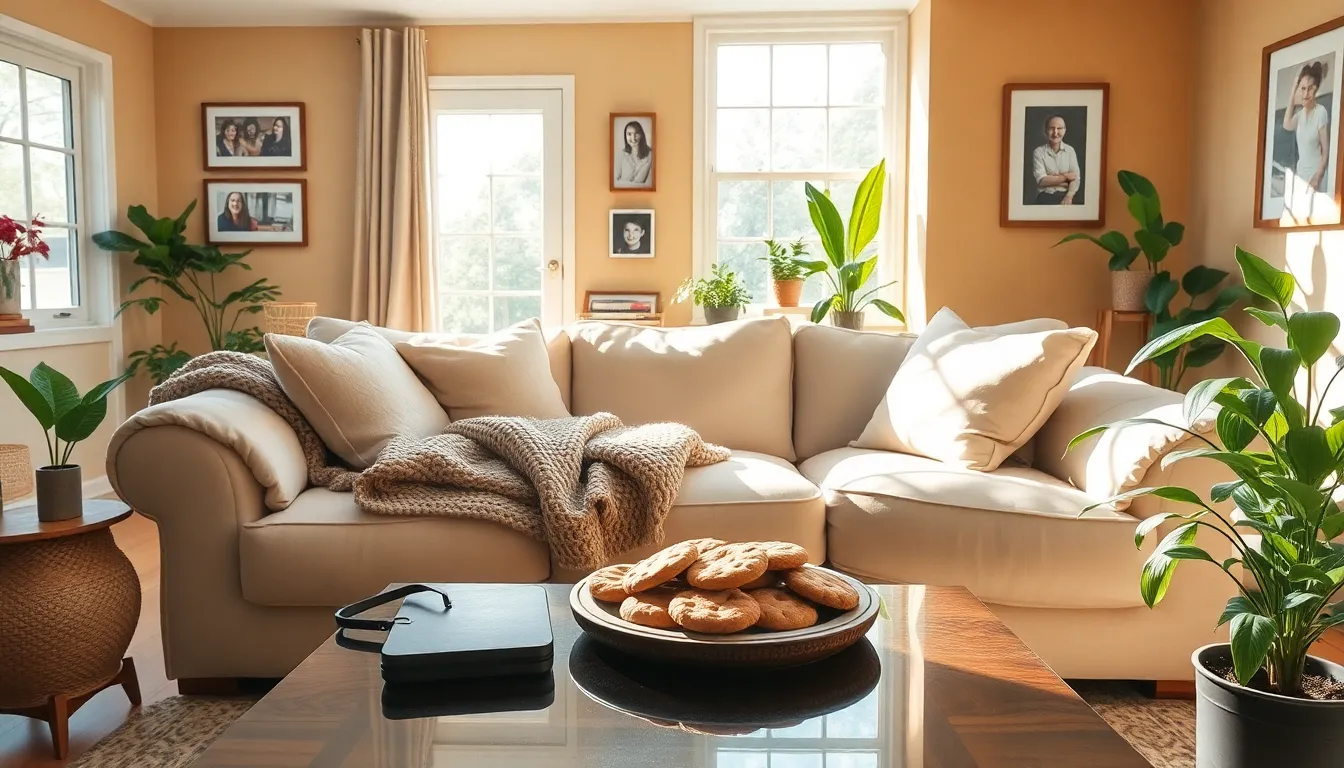Table of Contents
ToggleHome isn’t just a place; it’s a feeling. Imagine sinking into your favorite couch after a long day, surrounded by the comforting aroma of freshly baked cookies. That’s the magic of a home that feels good. It’s where laughter echoes in every room and cozy corners invite you to unwind.
Creating a feel-good home isn’t rocket science. It’s about infusing your space with warmth, personality, and a little bit of whimsy. From plush throws that beg for snuggles to quirky decor that sparks joy, every element plays a part. So grab a cup of coffee, kick off your shoes, and let’s explore how to transform your house into the ultimate sanctuary of comfort and happiness. After all, who wouldn’t want to live in a space that feels like a warm hug?
Understanding Home Feel Good
Creating a feel-good home involves fostering a space that radiates warmth and joy. This environment nurtures comforts that enhance well-being and promote a sense of belonging.
Definition of Home Feel Good
Home feel good refers to the emotional response triggered by a physical space. This feeling encompasses comfort, safety, and happiness. Establishing this sensation often includes cozy furnishings, inviting scents, and personal touches. Examples include warm lighting and favorite artwork that spark joy. The essence of home feel good lies in creating an atmosphere that resonates with individual preferences and tastes.
Importance of a Positive Home Environment
A positive home environment significantly impacts mental and emotional health. Research indicates that people thrive in spaces filled with light, serenity, and stimulating decor. Inviting spaces can enhance relaxation and productivity. Emotional well-being improves when individuals surround themselves with familiar items and calming colors. Furthermore, a supportive home atmosphere strengthens relationships among family members and friends. These factors together help cultivate resilience and happiness.
Elements That Contribute to Home Feel Good

Creating a feel-good home involves several key elements that enhance both comfort and emotional well-being.
Aesthetics and Design
Aesthetics play a crucial role in establishing a comforting atmosphere. Color choices can influence mood; soft blues and earthy tones generally evoke tranquility. Lighting options, including natural light and warm hues, make a space inviting. Personal decor items, from family photos to art pieces, add character and resonance. These elements together create an emotional connection to the space, fostering a sense of belonging. Integrating textures through soft fabrics and unique furnishings also contributes to a cozy environment. The arrangement of furniture impacts flow; open layouts promote relaxation, while intimate seating encourages connection.
Comfort and Functionality
Comfort matches aesthetics in importance when it comes to a feel-good home. Quality furnishings that provide support enhance relaxation and enjoyment. Ergonomic design ensures spaces are not just beautiful but also functional. Cozy textiles, such as plush cushions and soft throws, elevate comfort levels. Functionality brings ease into daily routines; organized spaces minimize stress and clutter. Inviting scents from candles or essential oils improve overall ambiance. An adaptable environment, responsive to various activities, creates versatility that enhances daily life. Ultimately, these factors combine to cultivate a welcoming haven that supports well-being and togetherness.
Creating a Home Feel Good Atmosphere
Crafting a feel-good atmosphere at home involves intentionality and attention to detail. Every aspect, from decor to scents, plays a role in creating warmth and comfort.
Tips for Personalization
Personalizing a space transforms it into a reflection of individuality. Display favorite artwork on walls to evoke fond memories. Include personal photos in creative frames to spark joy. Choose decor items that represent hobbies or travel experiences, fostering connections to cherished moments. Select colors that resonate emotionally, making the space inviting. Adding unique elements, such as handcrafted pieces or family heirlooms, further enhances the home’s personality.
Incorporating Natural Elements
Incorporating natural elements into home design nurtures a soothing environment. Use plants to improve air quality and add vibrancy to rooms. Natural materials, like wood or stone, create a sense of grounding and warmth. Maximize natural light by opening curtains during the day, promoting feelings of energy and tranquility. Incorporate water features or soft fabrics that mimic the outdoors, reinforcing a calming atmosphere. Given the benefits of nature, creating a harmonious blend of indoor and outdoor elements enhances overall well-being and fosters a relaxed setting.
Psychological Benefits of a Home Feel Good Space
Creating a home that feels good relaxes the mind and boosts emotional health. The space one inhabits significantly influences their overall well-being.
Mental Health Improvements
A welcoming home promotes mental clarity and emotional stability. Studies indicate that organized spaces reduce anxiety and foster a sense of control. Incorporating personal touches helps individuals connect with their surroundings and enhances feelings of belonging. Color choices also impact mood; warm and soothing hues create a calming effect. Incorporating favorite artwork and meaningful objects provides comfort, reinforcing personal identity and reducing feelings of isolation. Every detail contributes to emotional resilience, allowing individuals to navigate daily challenges with a stronger mindset.
Stress Reduction Techniques
Transforming a space into a sanctuary significantly diminishes stress levels. Natural light exposure enhances mood and encourages relaxation. Cushing couches and soft cushions invite rest and comfort after a long day. Fragrant candles or essential oils create a soothing atmosphere, contributing to overall relaxation. Furthermore, incorporating nature through indoor plants improves air quality and brings tranquility. Regularly decluttering keeps environments peaceful, alleviating mental strain. Each technique nurtures a sense of calm, allowing residents to feel at peace in their homes.
Creating a feel-good home is about more than aesthetics; it’s about cultivating an environment that nurtures the soul. By focusing on comfort warmth and personal touches, anyone can transform their living space into a sanctuary. The right colors scents and furnishings can significantly enhance emotional well-being while fostering a sense of belonging.
Incorporating natural elements and maximizing light not only beautifies a home but also promotes relaxation and reduces stress. Ultimately a thoughtfully designed space that reflects individual personality can lead to greater happiness and connection among loved ones. Embracing these principles can turn any house into a true haven of comfort and joy.




